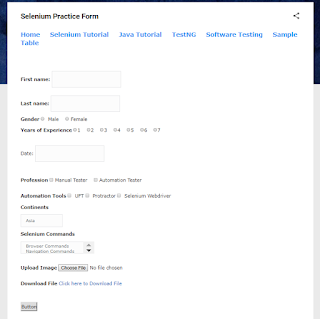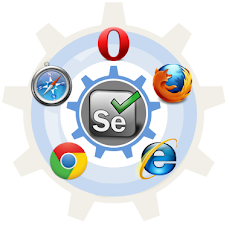DevOps Security Challenges And How To Overcome Them
Most IT companies have realized the need to transform - how they build software. These transformations are driving increased adoption of DevOps. However, with the rapid pace of transformation, Security - the most vital aspect of the high-speed software development life cycle is left behind.
Moreover, most companies have realized that the traditional approach to DevOps security is not working, and is often perceived as an obstacle to its speed.
Therefore, it is time that companies strike the right balance between Security and Speed - this is where DevOps security plays a critical role.
What is DevOps security?
DevOps security is a version of DevSecOps. Its main aim is to bring security into focus throughout the software development lifecycle by empowering the Dev team & Ops team to have control over the security of the software they develop and deploy.
DevOps security is a process of integrating security testing across the software development lifecycle. Security processes and control are built into every phase of the DevOps lifecycle, which helps fix the security issues as they emerge when they are less costly.
With DevOps security, your app is more secure as security is a continuous process. Also, early detection and remediation of errors can minimize the cost.
DevOps Security Challenges and How to Overcome Them:
1. Managing the Exposed Attack Surface
DevOps is enhanced by various cloud-based technologies, enabling the teams to deliver code - at speed. However, speed integration of the cloud can create security risks.
A manual error or misconfiguration can expose your resources to the public. Traditional approaches to secure network perimeter have become outdated.
Solution: Automated security checks can be used to manage exposed attack surfaces. However, automating the service process requires the right tools and integration into the right CI/CD pipeline.
Tools like - dynamic application, security testing, and static application security testing can help identify security issues early in the product lifecycle. In addition, you can leverage security as code, compliance as code, and testing as code to eliminate the need for manual security processes.
2. Building DevOps Security
Embedding DevOps security into the pipeline may look simple, but it is a complex process. In the traditional development cycle, security is always at the end of the pipeline.
The DevOps team conducts security checks after the development stage before pushing code into the production environment, making it challenging to integrate security into the pipeline.
Solution: Building DevOps security into the pipeline requires team collaboration and seamless communication between security and Dev teams.
Both teams should share information and understand day-to-day activities. Moreover, if the teams are on the same page, they can find solutions for every bottleneck together.
Following this, the team can improve the security posture of the software development cycle beyond broken codes and fixing bugs in real-time.
Building DevOps security minimizes time spent on security processes like - vulnerability testing and code analysis, which increase the cost and so the majority of the firms prefer DevOps outsourcing as it gives the same level of inputs at a comparatively low cost.
3. Using Tools for DevOps
DevOps relies on Cloud infra and Open source tools. Tools can improve productivity but invite potential risks for the DevOps environment.
For instance, containers enable you to run apps on any cloud infra. However, the lack of visibility in containers makes it challenging to identify vulnerabilities. Besides, differences in toolsets and security can trigger new problems.
Solution: It's essential to develop tool standards and usage guides to make it simple for developers and security teams to select and use tools and better the document in use.
In addition, you can choose a tool for any step in your toolchain. Automated tools can handle product integrations and upgrades, so you must select the best tools for your process.
4. Automating the Compliance Report
The compliance and auditing requirements have become stringent due to cyber risks and privacy concerns. Whether the requirement is external or internal, compliance reports may require added time and intensive manual effort.
Solution: Automating the compliance reports and auditing reports can save a lot of time and effort. However, integrating an automated audit trial throughout the software development cycle can be challenging.
It is where the proper expertise is required. You can set the audit logs to upload in real time to the read-only folder shared with the auditor. Moreover, this can help you avoid last-minute log searches when its the time for an audit.
5. Managing False Positives
You may face problems when managing false positives in the DevOps ecosystem as there is no defined approach to address them.
False positives may come in different quantities, so identifying each and saving the process through the software development cycle can be challenging and time-consuming. Besides, even large organizations struggle to manage false positives.
Solution: The security team must fix the false positives or critical applications that impact customer experience when minute issues arise.
You can define and analyze different patterns and define base rules for tool sets with fixed sets. By doing so, you can find which rule is triggering false positives and define the right combination to minimize the false positives.
Moreover, you can use tools that help to identify false positives like - signature patterns and behavioral detections. In addition, the approach enables you to detect false negatives that might go unnoticed in the noise of false positives. Once familiar, you can define new rules to minimize false positives.
6. Poor Access Control
DevOps environments face controlled privileged access and management. The teams and computing tools use credentials like passwords and API access to gain control over sensitive resources.
Poor access control can allow hackers to take control over passwords or credentials, disrupt operations and gain access to DevOps infra.
Solution: To enhance your management, you must remove sensitive data and credentials from files, codes, cloud platforms, and tools. Ensure that the applications and scripts can request an elevated account from a centralized password. Also, these credentials should be revoked automatically.
Managing privileged access will reduce your exposure. It will enable you to monitor every account session to ensure alignment with the access control policy.
Security Tips for DevOps:
Assign security responsibility to a single person from your DevOps team for successful DevOps security implementation. Having a single person in charge will ensure that teams don't overlook the security protocols. You can create a new role or add to existing functions.
You can verify the compatibility of cloud security with your app requirements. It ensures that internal security practices align with the cloud providers. You can enhance your security posture by doing so.
Implement a secure code practice - validate the input from external sources, as it can prevent source code vulnerabilities. You can use the wish list approach to validate external sources.
It's vital to use secure encryption. Plus, using libraries can ensure encryption safety. Apply the principle of least privilege where the users have minimum permission for the job.
Summing up
You can't delay the security of DevOps, as it should be implemented without errors. Any breach in security can be catastrophic to your product lifecycle.
When implementing the DevOps model in your company, it makes sense to integrate it with the best DevOps security practices and protocols. Moreover, you can integrate security control and testing from the beginning, making changes as you go about in the life cycle.
Best security practices will result in faster product delivery. So get started with the best DevOps security practices to make your applications secure.
Guest Author -
ups based on IoT and ChatBot.









.png)










If you're looking to kickstart your career in DevOps, Gurgaon is a great place to start. With its booming tech industry, there's never been a better time to get involved in DevOps training. And if you're looking for a reputable training institute, APTRON is one of the best in the business.APTRON's DevOps training in Gurgaon covers everything you need to know to become a skilled DevOps professional. From basics to advanced concepts, you'll learn about the entire DevOps lifecycle,
ReplyDelete